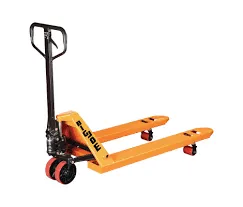


Understanding Small Electric Hoists A Comprehensive Overview
Small electric hoists are versatile lifting devices that have gained significant popularity in various industries due to their efficiency and ease of use. Designed to handle lighter loads, these hoists are critical in both commercial and residential applications. Whether you are lifting tools, equipment, or materials, a small electric hoist can streamline your operations and enhance productivity.
One of the primary features of small electric hoists is their compact design. Unlike larger hoisting equipment, which can be cumbersome and difficult to maneuver, small electric hoists are lightweight and portable. This portability allows them to be easily transported and installed in various locations, making them ideal for construction sites, warehouses, and even home garages. Their compact nature does not compromise their lifting capacity, as many models can handle loads ranging from 100 kg to over 500 kg.
Electrical efficiency is another essential attribute of small electric hoists. Powered by electricity, these devices eliminate the need for manual effort. With just the flick of a switch or a press of a button, users can lift and lower loads effortlessly. This automation not only reduces the physical strain on workers but also minimizes the risk of injury associated with manual lifting. Additionally, electric hoists typically come equipped with safety features such as emergency stop buttons and overload protection systems, ensuring secure operation.

Small electric hoists are available in a variety of types, including chain hoists and wire rope hoists. Chain hoists, for instance, utilize a chain mechanism for lifting, making them suitable for heavier and more intensive tasks. In contrast, wire rope hoists provide a smoother lifting action and are often preferred for lighter loads and precise positioning. Depending on the specific requirements of a project, users can select the type of hoist that best fits their needs.
When considering the purchase of a small electric hoist, it is crucial to evaluate its specifications to ensure it meets your lifting requirements. Factors to consider include the maximum lifting capacity, lift height, speed, and duty cycle. It is also wise to examine the build quality and materials used in construction to ensure durability and longevity. A well-made hoist can withstand the rigors of continuous use in demanding environments.
Moreover, the installation and maintenance of small electric hoists should not be overlooked. Many models come with detailed user manuals that outline the installation process, which is typically straightforward. Regular maintenance, such as inspecting the lifting mechanism and checking the electrical components, is essential to prolong the life of the hoist and ensure safe operation.
In conclusion, small electric hoists are an indispensable tool for various lifting tasks across multiple industries. Their efficiency, safety features, and ease of use make them a preferred choice for both professionals and DIY enthusiasts. By understanding the functionality and advantages of these hoists, users can make informed decisions, ensuring they select the right equipment for their specific needs. With the continued advancement in electric hoist technology, these devices will remain a critical component in the realm of lifting and material handling.



